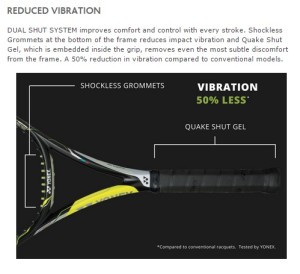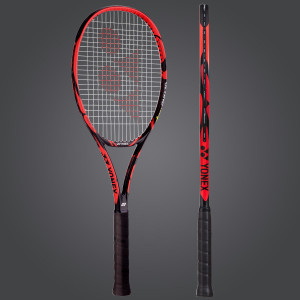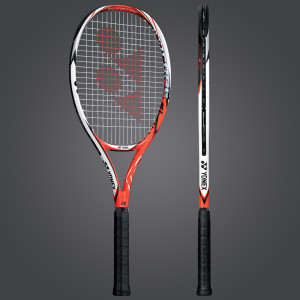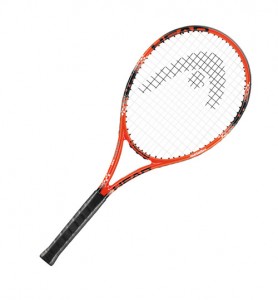 Every racquet manufacturer deals with the issue of unwanted and potentially unhealthy tennis racquet vibrations in a slightly different way. However, most create a break in the kinetic chain somewhere between the string bed and the player’s arm in order to interrupt the vibrations before they get to the player’s elbow.
Every racquet manufacturer deals with the issue of unwanted and potentially unhealthy tennis racquet vibrations in a slightly different way. However, most create a break in the kinetic chain somewhere between the string bed and the player’s arm in order to interrupt the vibrations before they get to the player’s elbow.
Babolat ™, for example, places a Cortex system above the handle and just below the throat on several of their high-end frames while Wilson ™goes even further by separating the racquet’s loop from the rest of the frame with their famous Triad technology.
The problem with this method is twofold. First, creating a physical break in the continuity of the frame creates an unpredictable flex point. Second, physical breaks in continuity can lead to a loss of racquet head feel or “touch” for some players.
With this in mind, Yonex ™ takes a different approach to vibration dampening in their Ezone Ai tennis racquets. Rather than creating a physical break in the frame’s continuity, they have adopted a variation on the “solid feel” technology built into their high-end badminton racquets.
First, Yonex places eight shockless grommets at the bottom of their tennis racquets. Then, to reduce vibrations even further, they fill the racquet handle with Quake Shut Gel. The result: a 50% reduction in vibrations compared to conventional tennis racquets.
To get an idea of how much of a difference this makes to players with tennis elbow, take a look at the video above and note the two bottles of water. The bottle on the right is experiencing fewer vibrations because it is sitting on pad made of Quake Shut Gel.
This approach to vibration dampening is not new to Yonex. All of their world class Japanese-made badminton frames feature Solid Feel Core technology which is virtually the same thing. By adapting this technology to tennis frames, Yonex has given the Yonex Ezone series of tennis racquets exceptional anti-vibration capabilities without breaking the kinetic chain and sacrificing frame stiffness.

 In an average year, Racquet Network staff sell racquets to more than 2000 customers. Some know exactly what they want when they walk through our doors, but most do not. Most need some help.
In an average year, Racquet Network staff sell racquets to more than 2000 customers. Some know exactly what they want when they walk through our doors, but most do not. Most need some help. YONEX USA MEDIA RELEASE
YONEX USA MEDIA RELEASE
